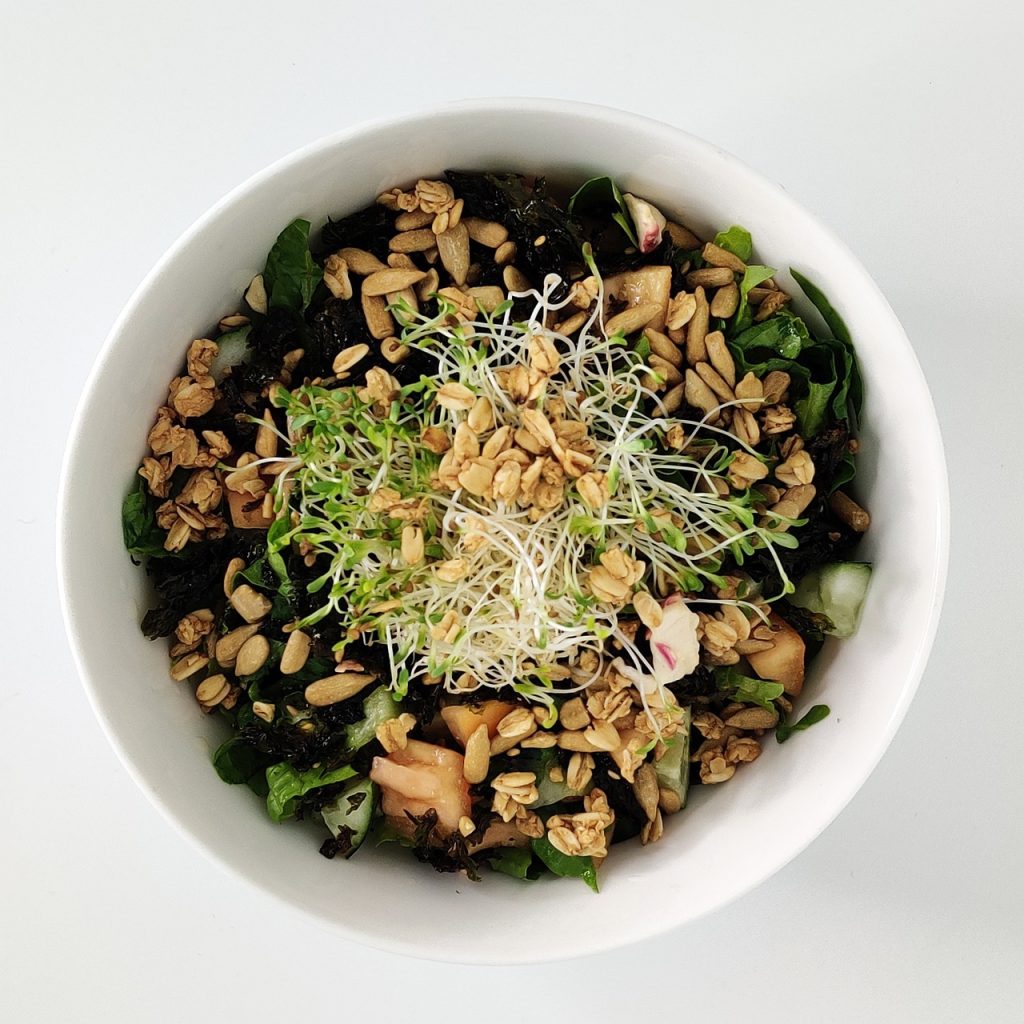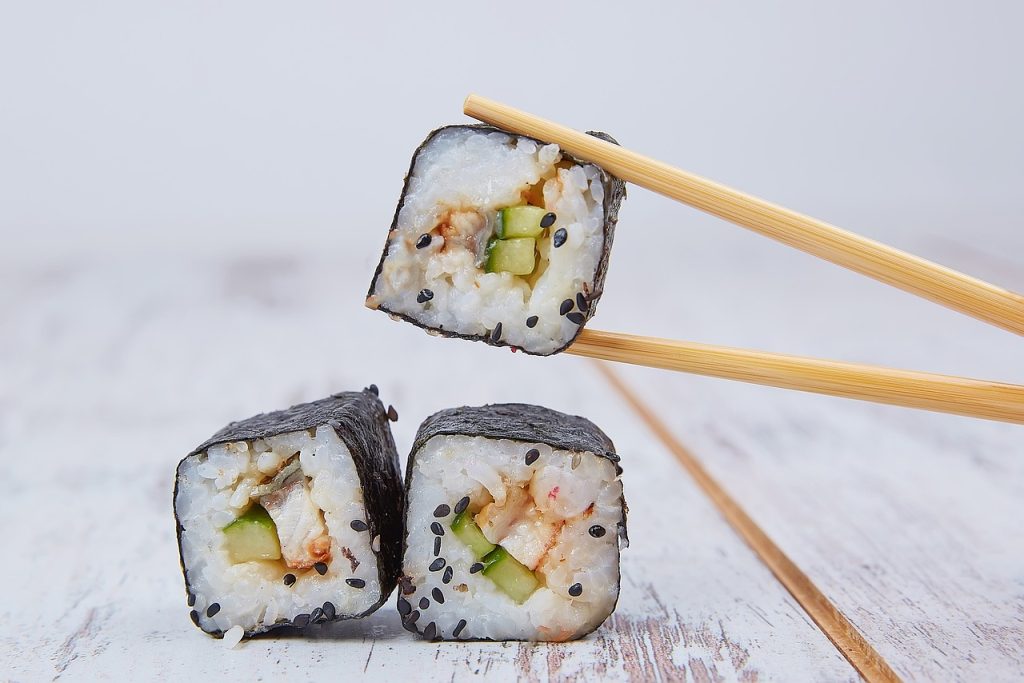Is Seaweed Low FODMAP? A Friendly Guide for Digestive Health
Seaweed, a staple in Asian cuisine, has gained popularity worldwide for its unique taste and numerous health benefits. But if you’re following a low FODMAP diet to manage gastrointestinal issues, you might be wondering whether seaweed fits the bill.
Good news! Seaweed is not only an excellent addition to a FODMAP-friendly meal plan but also offers its own set of health advantages.
This article will tell you how to add seaweed to your Low-FODMAP-diet.
Is Seaweed Low FODMAP?
Yes, Seaweed is a low-FODMAP food and can be incorporated into a low-FODMAP diet. Several types of seaweed have no FODMAPs and can be consumed without triggering gastrointestinal symptoms. Adding seaweed to your diet allows you to enjoy its health benefits and unique taste while adhering to a low FODMAP meal plan.
However, it’s important to find a balance of foods that work well for your digestion. You may need to experiment with different recipes and ingredients to find what suits you best. As always, it’s a good idea to consult with a dietitian or healthcare professional before making significant changes to your diet.
Also Read: Is Edamame Low FODMAP?
Types of Seaweed and Their FODMAP Content

Seaweed can be a nutritious addition to your diet, but you may wonder about its FODMAP content. Here, we’ll discuss four popular types of seaweed and their FODMAP content.
Nori
Nori, typically used for sushi rolls, is a type of seaweed that’s generally considered low in FODMAPs.
While it’s not explicitly tested by experts, its naturally low carbohydrate content suggests that it may be suitable for those following a low FODMAP diet. You can enjoy Nori as a snack or to wrap your favorite sushi rolls without worrying too much about triggering your IBS symptoms.
Kombu
Kombu, commonly used in making Japanese dashi broth, has a higher FODMAP content due to its high fructan levels. It might not be suitable for those with IBS or following a strict low FODMAP diet.
However, Kombu can be used in making stocks and broths, where much of the FODMAP content gets infused into the liquid and then removed when strained, making it a possible option for those looking to add some depth of flavor to their dishes.
Wakame
Wakame is another type of seaweed that’s often found in seaweed salads or miso soups.
Unfortunately, there isn’t much data available on its FODMAP content. In general, seaweed contains fructans, which are a type of FODMAP that can trigger IBS symptoms in some individuals.
To ensure that you’re able to enjoy Wakame without any negative side effects, it’s best to start with small amounts and monitor your tolerance.
Dulse
Dulse is a red seaweed that’s often used in Irish and other European cuisines. Similar to Wakame, there is limited information on its FODMAP content.
It’s essential to be cautious when introducing Dulse into your diet, particularly if you’re following a low FODMAP plan. Begin with a small serving to see if it triggers any IBS symptoms and adjust your intake accordingly.
Health Benefits of Seaweed in a Low FODMAP Diet
When following a low FODMAP diet, you’ll be pleased to know that seaweed can be a valuable food choice. Let’s take a look at some of the health benefits you can enjoy by incorporating seaweed into your meals.
Vitamins and Minerals
Firstly, seaweed is a good source of essential vitamins and minerals such as iodine, iron, and calcium. These nutrients play vital roles in your body’s overall health and well-being, so it’s great to find a low FODMAP option like seaweed that provides them.
Essential Fatty Acids
Another advantage of eating seaweed is that it contains omega-3 fatty acids. These healthy fats can support heart health, reduce inflammation, and promote brain function.
Antioxidants
Moreover, seaweed is rich in antioxidants, which help protect your body’s cells from damage caused by harmful free radicals.
Weight Management
Lastly, seaweed can be beneficial for weight management. Some types of seaweed, like kelp, have been shown to contain compounds that may help regulate your appetite and assist with weight loss efforts.
Incorporating Seaweed into Your Low FODMAP Meal Plan

If you’re seeking to include a variety of nutritious foods in your low FODMAP meal plan, look no further than seaweed. Seaweed is generally considered suitable for a low FODMAP diet, such as nori seaweed, in normal serving sizes which can provide valuable nutrients without triggering FODMAP symptoms.
Sushi
One great way to bring seaweed into your diet is through sushi rolls. Opt for rolls containing low FODMAP ingredients like raw or cooked fish, carrot, cucumber, red pepper, eggplant/aubergine, daikon, avocado (in small servings), or nori (dried seaweed).
When ordering sushi, be sure to check for any ingredients or sauces that might contain high FODMAP elements.
Seaweed Salads
Seaweed salad is another delicious option to consider, as it often includes wakame seaweed, which can be suitable for a low FODMAP meal plan. Just make sure to avoid any salad dressings or toppings with high FODMAP ingredients, and try adding your own vinegar, oil, or low FODMAP-safe seasonings to enhance the flavor.
Roasted Seaweed Snack
Snacking on dry roasted nori sheets can also be a savory addition to your low FODMAP journey. Many health food stores carry these snacks, and they can be a great choice when you’re craving something salty and crunchy.
Potential Drawbacks and Precautions

Although seaweed is generally considered a healthy food rich in nutrients like iodine, iron, calcium, and omega-3 fatty acids, there might be some possible concerns associated with its inclusion in a low FODMAP diet.
Not All Seaweed is The Same
Firstly, not all types of seaweed may have the same FODMAP levels. While some varieties might be safe to consume, others could potentially trigger digestive symptoms in those with sensitivities to high-FODMAP foods.
It’s important to consult with a healthcare professional or a knowledgeable dietitian to help determine which types of seaweed are more suitable for your individual dietary needs.
Iodine Overconsumption
Another concern is the possibility of overconsumption of iodine. Seaweed is naturally high in iodine, which is an essential nutrient for thyroid function.
However, consuming excessive amounts of iodine might lead to thyroid problems, especially for those with pre-existing thyroid conditions. To avoid any negative impacts, it’s essential to consume seaweed in moderation and keep track of your overall iodine intake.
Heavy Metal Contamination
Finally, seaweed might contain traces of heavy metals, such as arsenic, cadmium, and lead. Although these levels are usually considered negligible, excessive intake of heavy metals can lead to health issues. Make sure to source seaweed from reputable suppliers to minimize the potential risk of contamination.
Conclusion – Is Seaweed Low FODMAP?
Yes, seaweed is low FODMAP. However, various types of seaweed have different FODMAP contents. So, make sure to monitor your reactions to each type and adjust your consumption based on your specific tolerances.
Just remember to listen to your body and adjust your diet as needed.

Jane Porter is an architect that like many others, had her life significantly impacted by digestive problems for many year. Trying to find a solution to her digestive problem, she came across the low FODMAP diet, a scientifically-backed approach designed to alleviate symptoms associated with irritable bowel syndrome (IBS) and other digestive disorders.

